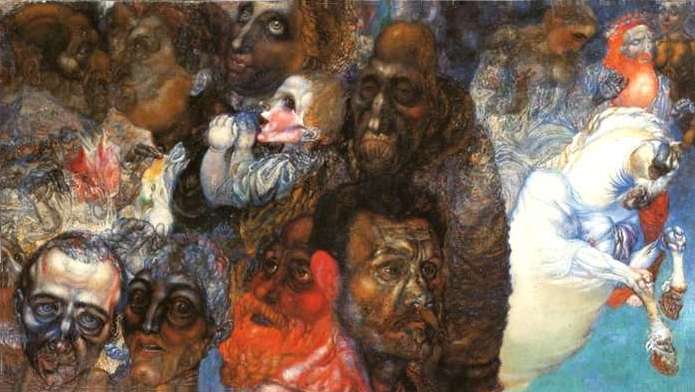Blog
Art derived from micro-physical sense of substance – Pavel Filonov
 “In the analytical thinking, process of learning becomes an integral part of the creative process.” – an pivotal direction that separates Pavel Filonov and his school from the other art styles circa 1910-40.
“In the analytical thinking, process of learning becomes an integral part of the creative process.” – an pivotal direction that separates Pavel Filonov and his school from the other art styles circa 1910-40.
Taking turn off trendy styles of Futurism, Cubism and Constructivism Pavel Filonov defined his own unique path naming it Analytical. Thus, creating a totally new direction, an art style, which, unfortunately, has remained largely unknown in the West, because Filonov did not travel abroad or participated in the modern art-shows, as did many russian artists, including Malevich, Kandinsky, Tatlin. His Analytical style was maybe inspired by science with recently discovered anatomical and molecular structure of physical world, or may be the artist’s vision and perception – we don’t know for sure. For two years, Filonov was a student in the prestigious St. Petersburg Art Academy, a world-class school of realistic art. Yet, he dropped off the academy and continued working on his own.
The essentials of the Analytic method is that art-work has to be built (formed, painted) from small details, “primary pixels” in order to become a whole, holistic, big entity. This approach is completely opposite to common art-process (working from big to small) thought in schools. Working on paintings or drawings Filonov invests a lot of energy and meaning into every small knot of his canvas and dot-line on paper– which creates sensible streaming patterns of art-matter coming from each small art-particle.
Every brush stroke, every contact with the picture – this is a clear entry through the matter and in the matter of the physical process inside the artist and the whole work is a whole record of intelligence artist who wrote it. Art is a reflection throughout matter of recording (painting) and struggle to create a form of supreme human intelligence.

Live Head, 1923
His multi-layered works can magnet eyes for long time letting rediscover new scenes, characters, and meanings at every view. Filonov’s school of Analytical Art (he established in St. Petersburg, Russia) attracted many followers and students from the revolutionary minded crowd who had open minds to new. In 1920th Filonov is busy working on theoretical bases and curriculums, writing “The Method of Analytical Artform”, “Principles of Completion”, “Analytical Painting” and more.
The more pronounced form, the more pronounced the content. The form is a continuous line. Each line must be ended. Every little thing has to be done, each job should be ended. Think hard and accurately over every fiber of work to do. Every part do continuously and accurately.

Raider
Imagine continuously and accurately in every bit of color that is found so that it fits into this piece as heat enters the body, or so that the color was organically linked with the form.

Animals, 1930

Ships, 1919
In his teaching, the artist embraced the idea of October Revolution of creating freedom, fairness, and better lives. Later finding that these revolutionaries opposed and rejected his method, seeing his art schools (and many others) were shot down in 1930-31 by soviet administration, following up negative remarks in press – all to insure ideological domination of Socialist Realism art-style used as propaganda tool. Filonov ended up with no support or income making hard living and finding food. He died from hunger in 1942 during WWII legendary siege of Leningrad, leaving many masterworks behind refused by bolsheviks.

“Heads” 1910

2 Comments
Anya Dikareva
September 25, 2013Working from the inside out.
Poor Filonov.
Leo Melamud
September 26, 2013All is possible in art, even working in reverse. Of course if you know what you’re doing.